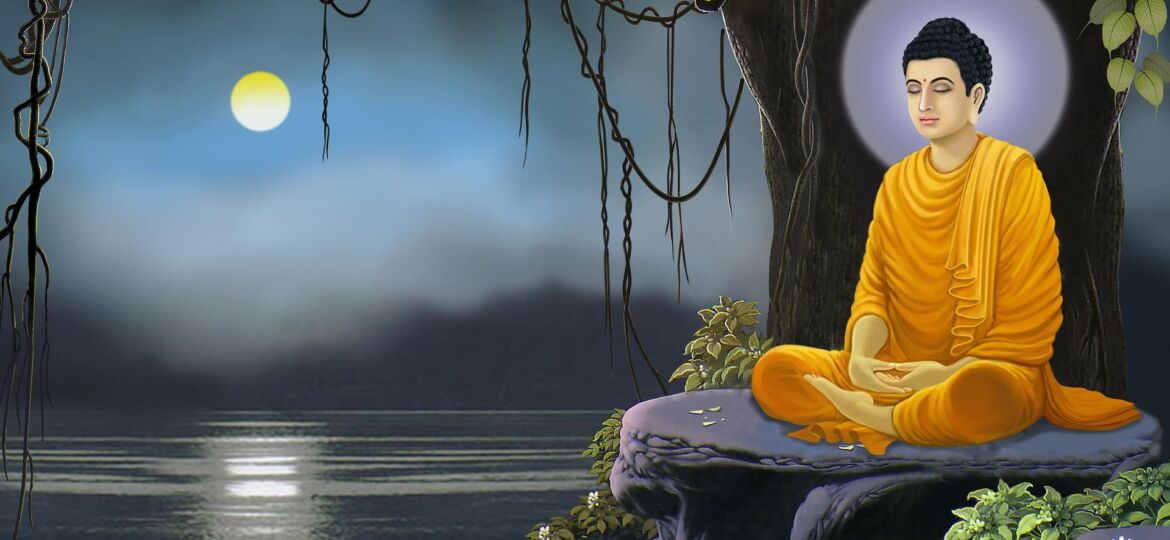
Gautama Buddha, the founder of Buddhism, is known for his profound teachings on enlightenment and compassion. But before he became the Buddha, he led a life of luxury as a prince in ancient India. The story of his great renunciation marks a pivotal moment in his journey toward spiritual truth. In this blog, I will delve into the events that led to his decision to leave behind his princely life and embark on a path of self-discovery and enlightenment.
- Life in the Palace:
Gautama Buddha, then known as Prince Siddhartha, was born into a royal family in the 6th century BCE in Lumbini, Nepal. As a prince, he enjoyed a life of abundance and opulence within the walls of the palace. He was shielded from the harsh realities of the outside world, where suffering and pain were rampant. Siddhartha was surrounded by luxury, pleasure, and indulgence, but he felt a deep dissatisfaction and a yearning for something more profound.
- The Four Encounters:
One day, Siddhartha ventured outside the palace walls, accompanied by his charioteer. During this journey, he encountered four sights that would forever change his life. The first encounter was with an old man, frail and feeble, representing the inevitability of aging. The second encounter was with a sick man, writhing in pain, highlighting the existence of suffering. The third encounter was with a funeral procession, where Siddhartha saw a lifeless body being carried away, reminding him of the impermanence of life. Lastly, he encountered a wandering ascetic, radiating peace and serenity, embodying the pursuit of spiritual truth.
- The Decision to Renounce:
These encounters deeply impacted Siddhartha’s mind. He realized that life was permeated by suffering and that wealth and pleasure were fleeting. Siddhartha could no longer find contentment within the palace walls, as his heart yearned for answers to life’s fundamental questions. Motivated by a genuine desire to understand the nature of suffering and find a way to alleviate it, he made the courageous decision to renounce his princely life.
- The Departure:
Under the cover of darkness, Siddhartha left the palace, bidding farewell to his sleeping wife and newborn child. He cut off his princely hair and exchanged his royal garments for simple robes, symbolizing his detachment from worldly attachments. With only a handful of companions, Siddhartha set out into the forests and mountains of India, in search of enlightenment and the end of suffering.
- The Path to Enlightenment:
For several years, Siddhartha immersed himself in the ascetic practices of various spiritual teachers, subjecting himself to extreme forms of self-mortification and deprivation. However, he soon realized that these extreme practices did not lead to enlightenment but instead weakened the body and clouded the mind. Determined to find a balanced path, Siddhartha abandoned these extreme practices and turned to meditation and introspection.
During his meditation practice, Siddhartha experienced deep states of concentration and gained profound insights into the nature of reality and the causes of suffering. He realized that the key to liberation lay in finding the Middle Way, a path of moderation that avoids the extremes of sensual indulgence and extreme asceticism. This realization marked a significant breakthrough in his spiritual journey.
- The Awakening:
After years of dedicated practice, Siddhartha finally attained enlightenment under the Bodhi Tree in Bodh Gaya, India. He became the Buddha, the awakened one, and from that moment on, dedicated his life to sharing his insights and teachings with others.
- The Teachings:
The Buddha’s teachings centered around the Four Noble Truths and the Eightfold Path. The Four Noble Truths encompass the fundamental nature of existence and the causes of suffering. They are:
- The truth of suffering: Life is characterized by suffering, dissatisfaction, and impermanence.
- The truth of the origin of suffering: Attachment and craving are the root causes of suffering.
- The truth of the cessation of suffering: By eliminating attachment and craving, one can attain liberation from suffering.
- The truth of the path leading to the cessation of suffering: The Eightfold Path, which consists of the Right View, Right Intention, Right Speech, Right Action, Right Livelihood, Right Effort, Right Mindfulness, and Right Concentration, provides a roadmap for living a wholesome and enlightened life.
The Buddha’s teachings emphasize mindfulness, compassion, ethical conduct, and the cultivation of wisdom. They provide practical guidance for individuals to alleviate suffering and attain enlightenment.
Conclusion:
The journey of Gautama Buddha from palace to forest, from luxury to renunciation, is a testament to the human quest for truth and liberation. His decision to renounce his princely life marked a profound turning point that led him to attain enlightenment and become the Buddha. His teachings continue to inspire and guide people in their search for meaning, inner peace, and liberation from suffering. The story of the great renunciation serves as a reminder that true fulfillment lies not in material possessions, but in the pursuit of spiritual truth and the cultivation of compassion and wisdom. The path shown by the Buddha remains relevant and transformative in the modern world, offering solace, guidance, and the potential for profound personal transformation.